Mercedes-Benz 300 SL Aluminium
Almost every car fan knows the normal 300 SL. But among the 1,400 Coupés there were also 29 very special specimens ex works, which are extremely sought-after collector’s items today. We would like to shed light on their history today. For this purpose, we take a look at one of the 29 cars in our picture galleries, which is currently available for purchase at the classic car dealer Schaltkulisse in Germany. It is immediately noticeable that this Mercedes-Benz 300 SL doesn’t appear in the extremely typical metallic silver. Around 39 percent of customers opted for silver between 1954 and 1957. And several other 300 SL cars were given this color in the course of the restorations. In stark contrast, this very car has been painted in ‘Elfenbein’ (ivory) since its first delivery. The wheels are also in the same color as the car with central lockings.
Powerful NSL engine
Chassis number 6500015, the fifteenth car of the 1956 model year, went to the British industrialist Charles Robin A. Grant. His love for cars that were as new and fast as possible was well known. The best was just good enough, and since he could afford it without a doubt, he chose all the options available for his 300 SL. In addition to the unusual exterior color, he opted for cream-colored vinyl in the interior, combined with red-green plaid tartan wool on the seats. He also opted for the ‘NSL’ engine. This describes a performance-enhanced version of the inline six-cylinder engine. Instead of the usual 215, it has 240 hp. This results from a modified mechanical injection system from Bosch and sharper camshafts. Only 56 ‘Gullwing’ models received this conversion ex works. With the equipment mentioned above, Charles Grant’s car would already be extremely rare. But there was one more extra that he ticked off on the order.








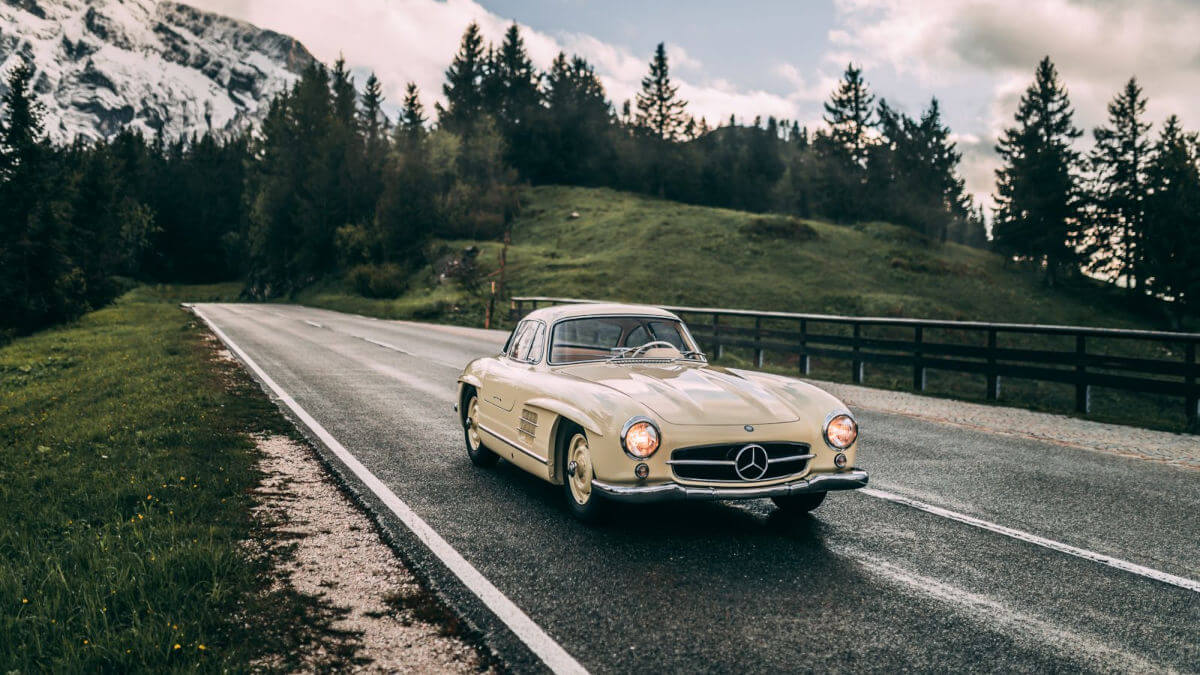







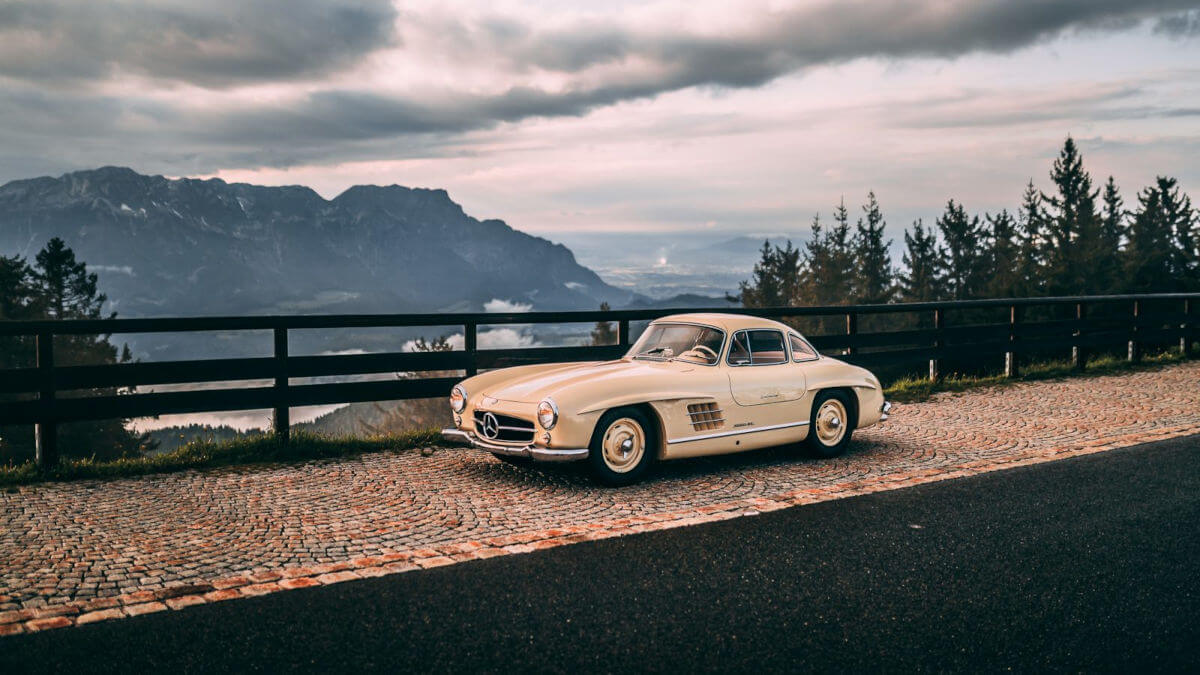



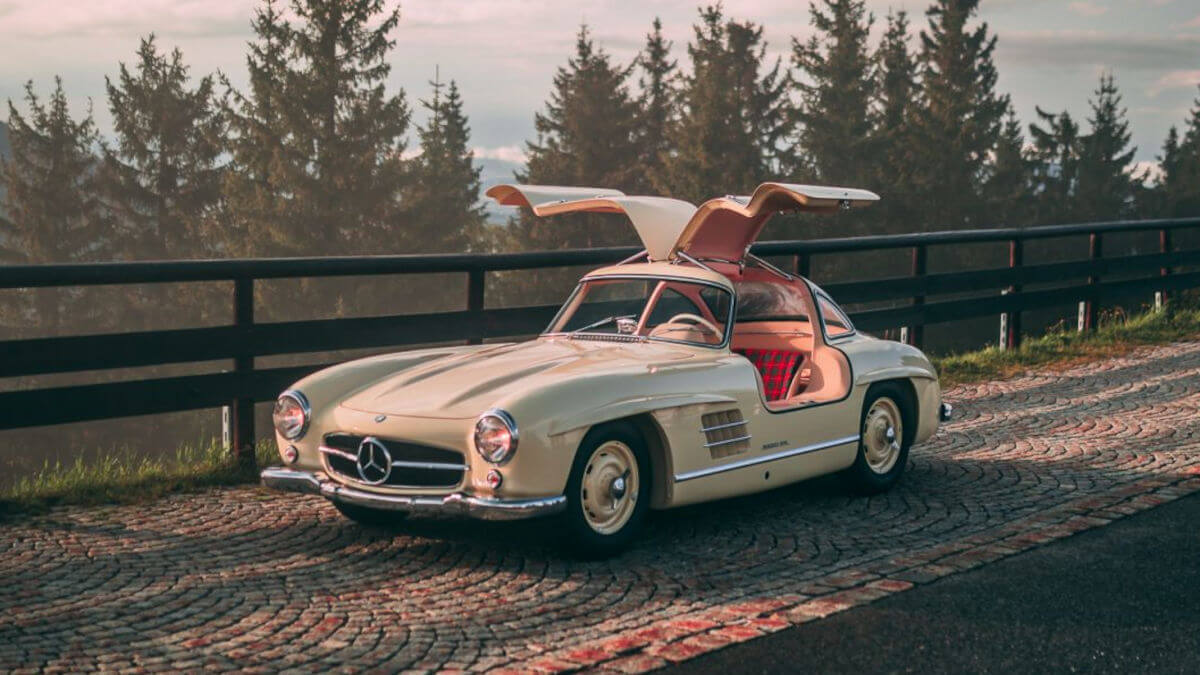



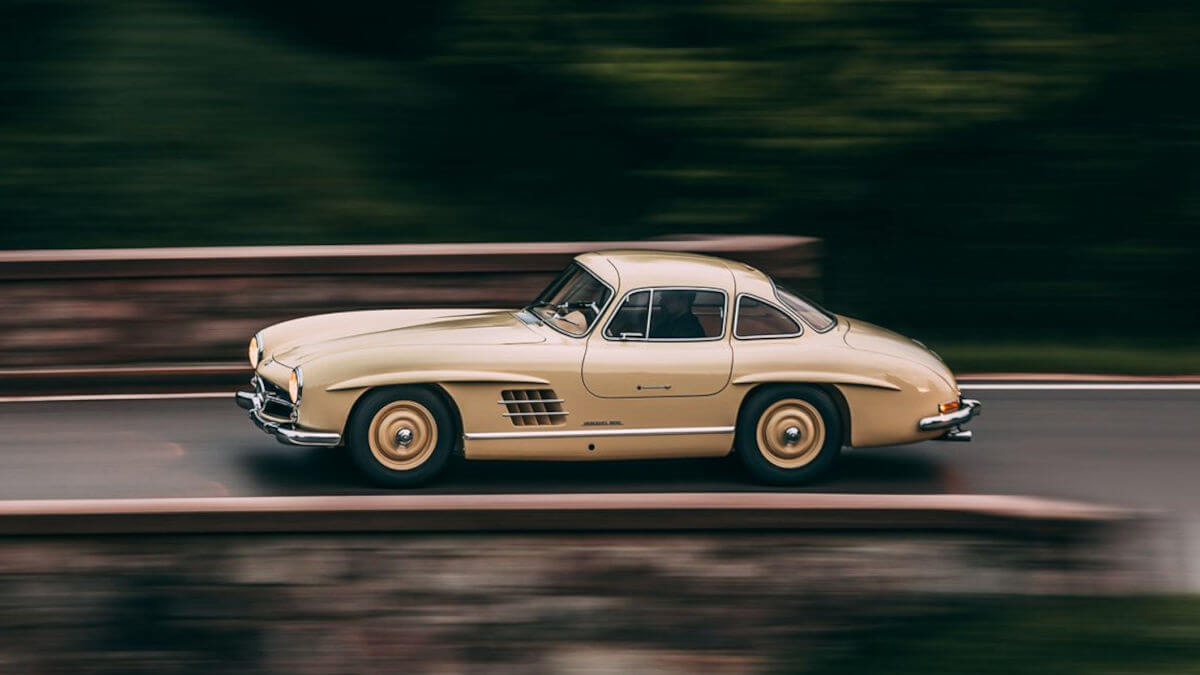











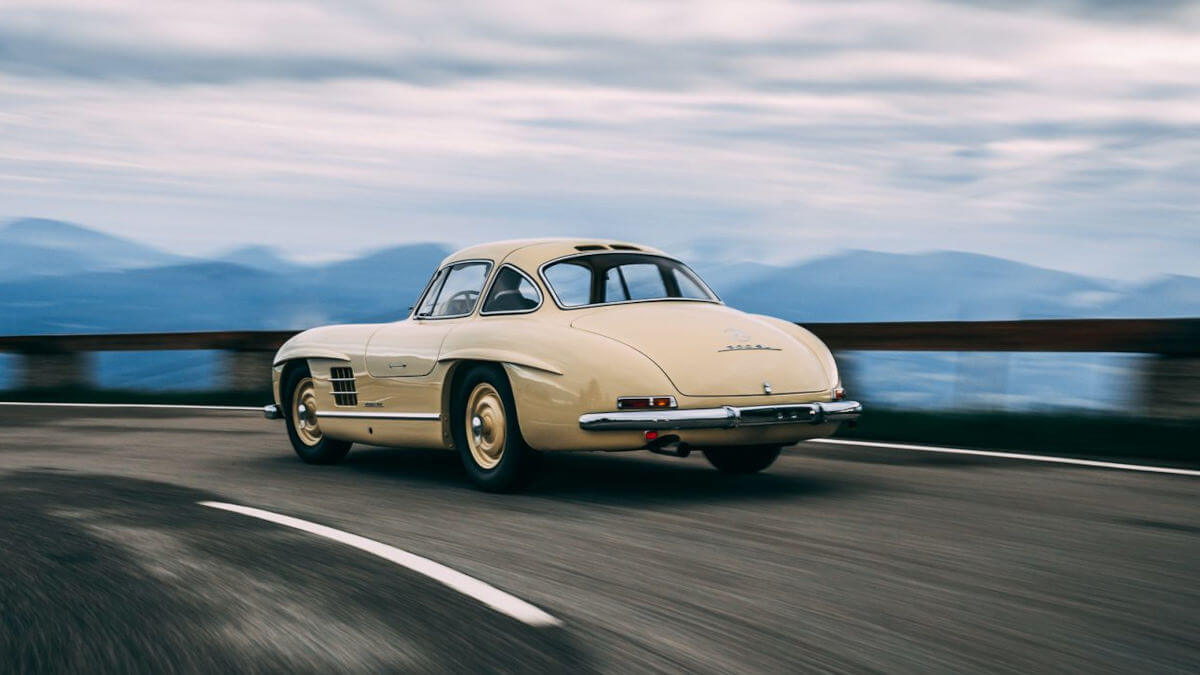



















Normally, Mercedes-Benz made the body parts that were mounted on the tubular frame of the 300 SL from sheet steel. On special request, they used sheet metal from a much lighter aluminium alloy. In comparison, these vehicles weighed around 80 kilograms less. The aluminium bodies were produced by hand in the motorsports department in Untertürkheim, where the bare frames had to be brought in from Sindelfingen. Despite this rather high effort, the additional costs at that time were relatively low. Many customers obviously didn’t realize that this possibility existed at all. Especially for America, the dealers often configured cars long in advance and then offered them to the customers on site, without them having the choice. This resulted in a total of only 29 examples of the Mercedes-Benz 300 SL with aluminium bodywork. It is doubtful whether Mr. Grant had any idea of this rarity when he placed his order. His car was delivered to by London-based Mercedes-Benz Ltd. in January 1956. Over the next ten years or so, he enjoyed the Gullwing relatively often on various journeys until he fell in love with a brand new Lamborghini 350 GT.
Temporarily owned by David Piper
For the SL followed a six year period in the possession of a British entrepreneur and then two years with racing driver David Piper. Piper achieved the majority of his racing successes with various Ferrari cars. Today he is still known to many car fans, as he lost a leg in an accident during the shooting of Steve McQueen’s movie ‘Le Mans’. This was also the reason for the rapid resale of the Mercedes, as he had difficulty getting behind the steering wheel with his prosthesis. Michael Barrett, a doctor, was the next owner and only briefly enjoyed the German rarity, as his brother Tim had a slight accident with it on the day of the purchase. They parked it in a barn, with the clear aim of repairing and restoring it as soon as possible. However, Mr. Barrett obviously couldn’t cope with this alone, so he had the Coupé and a 300 SL Roadster from 1958 shipped to a workshop in New Zealand.
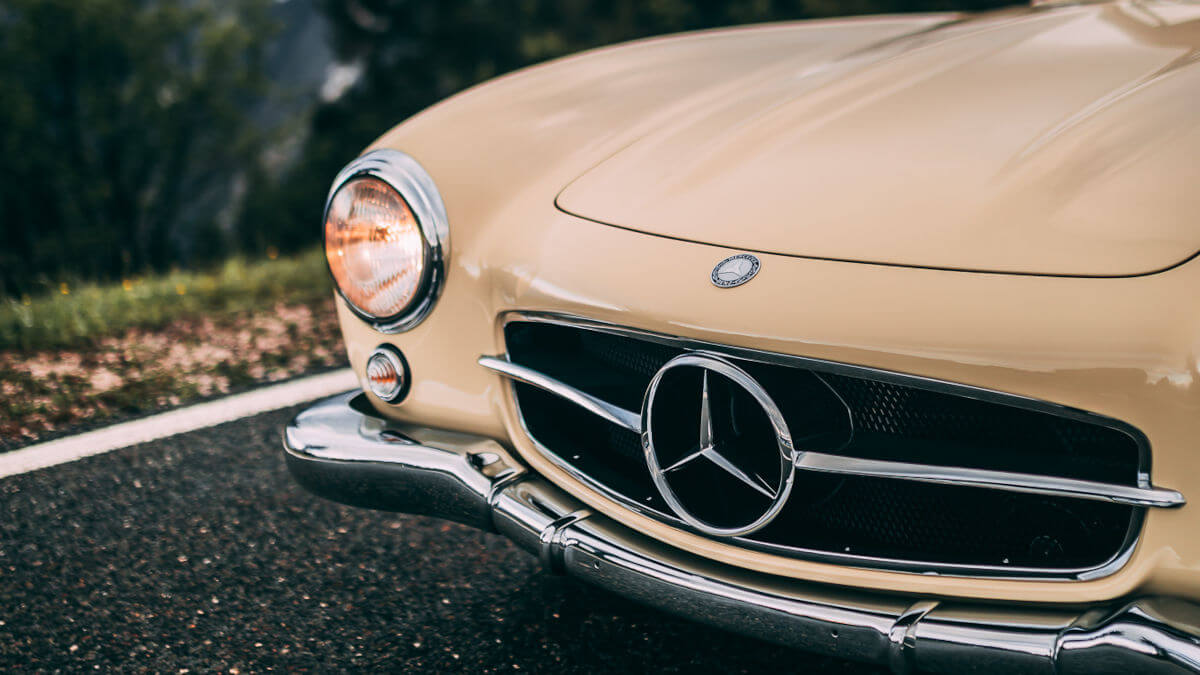







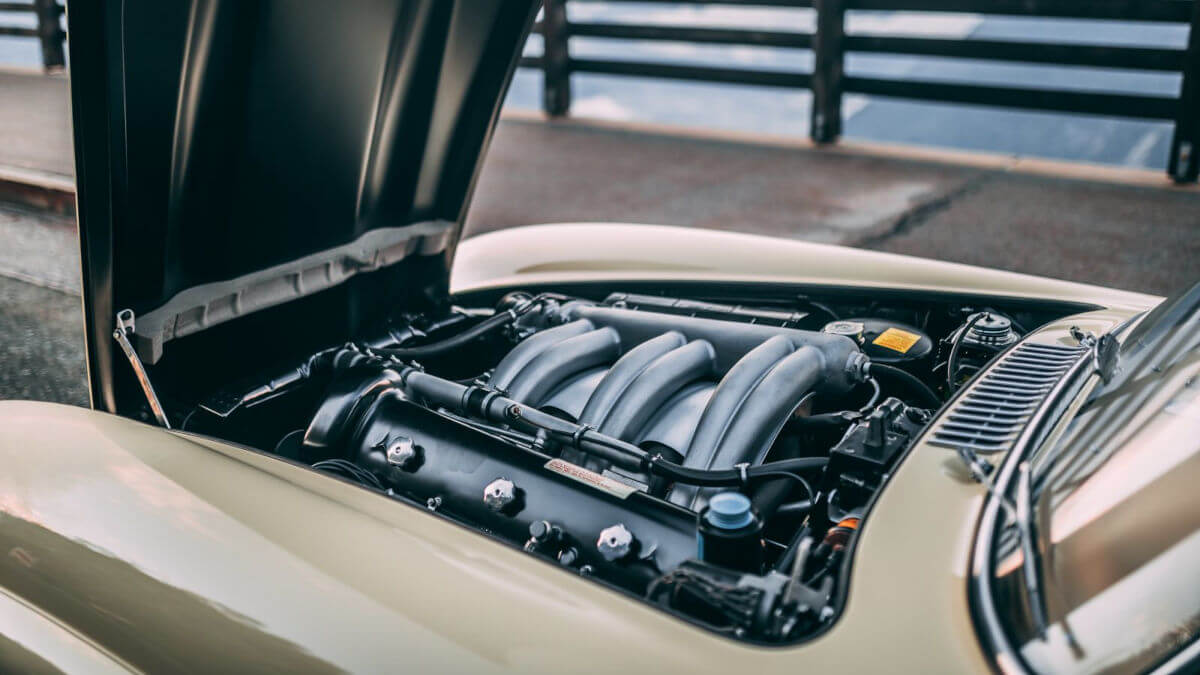



















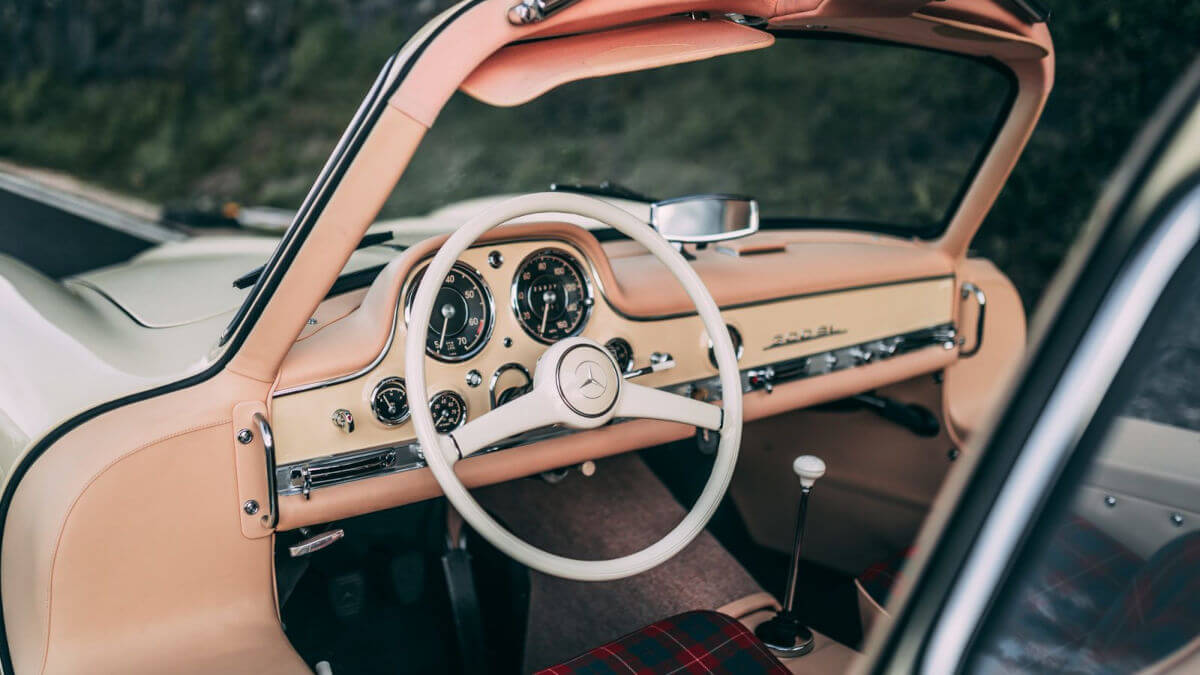















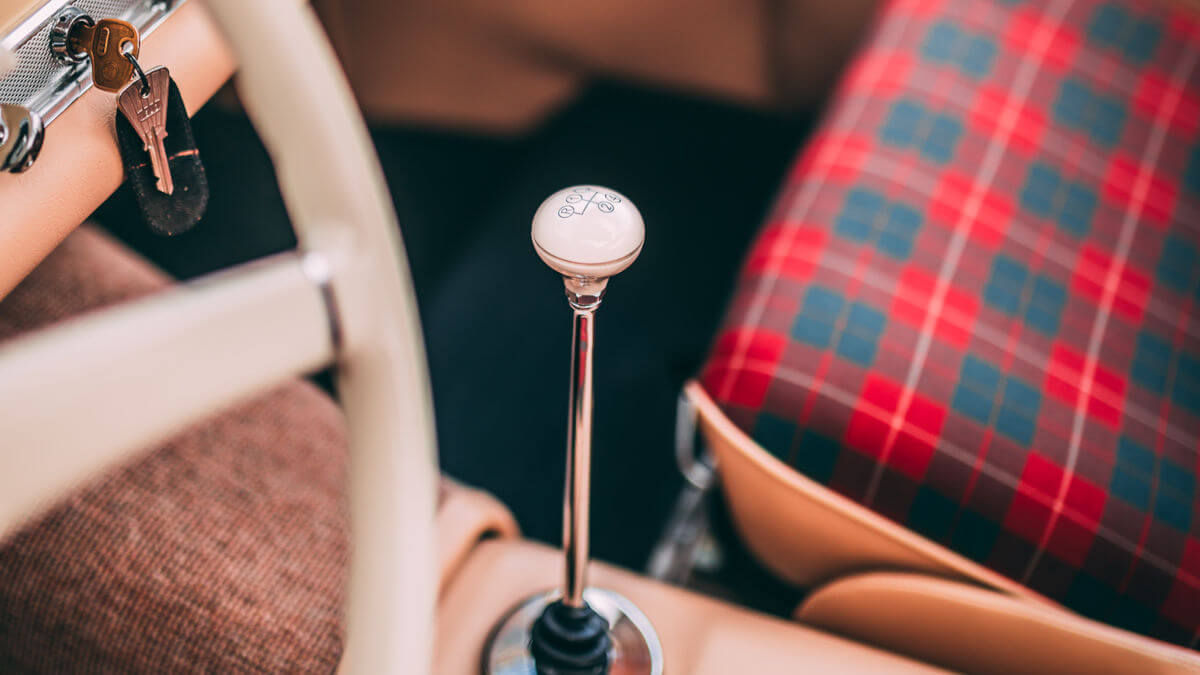







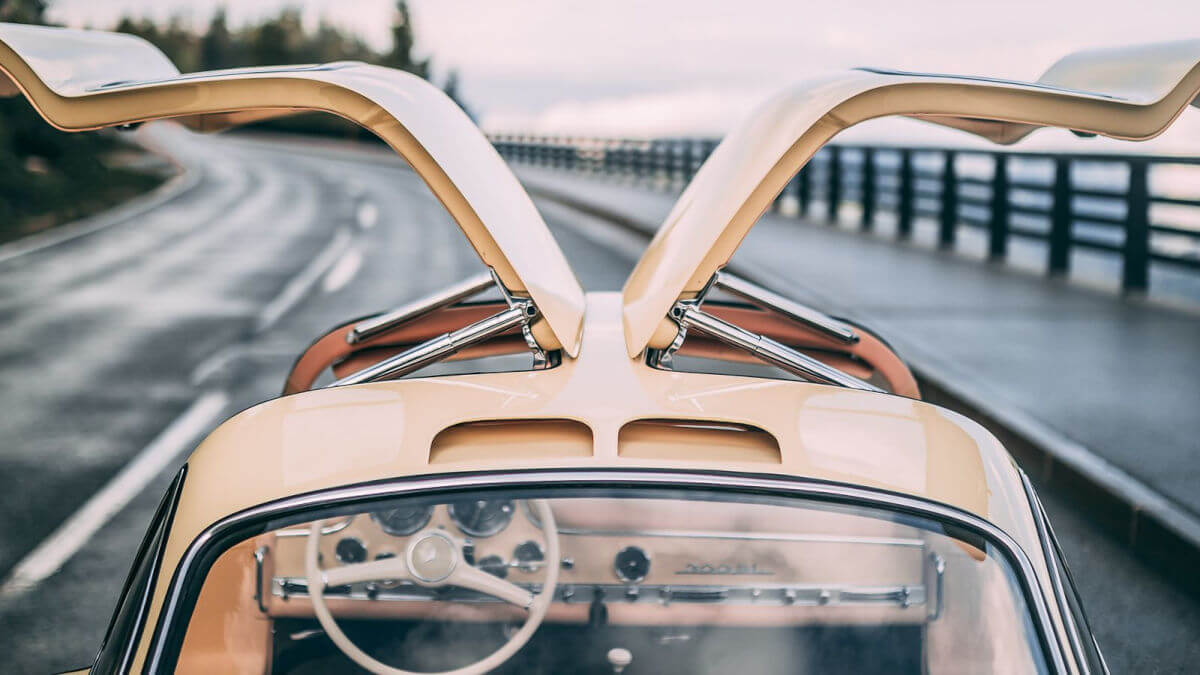







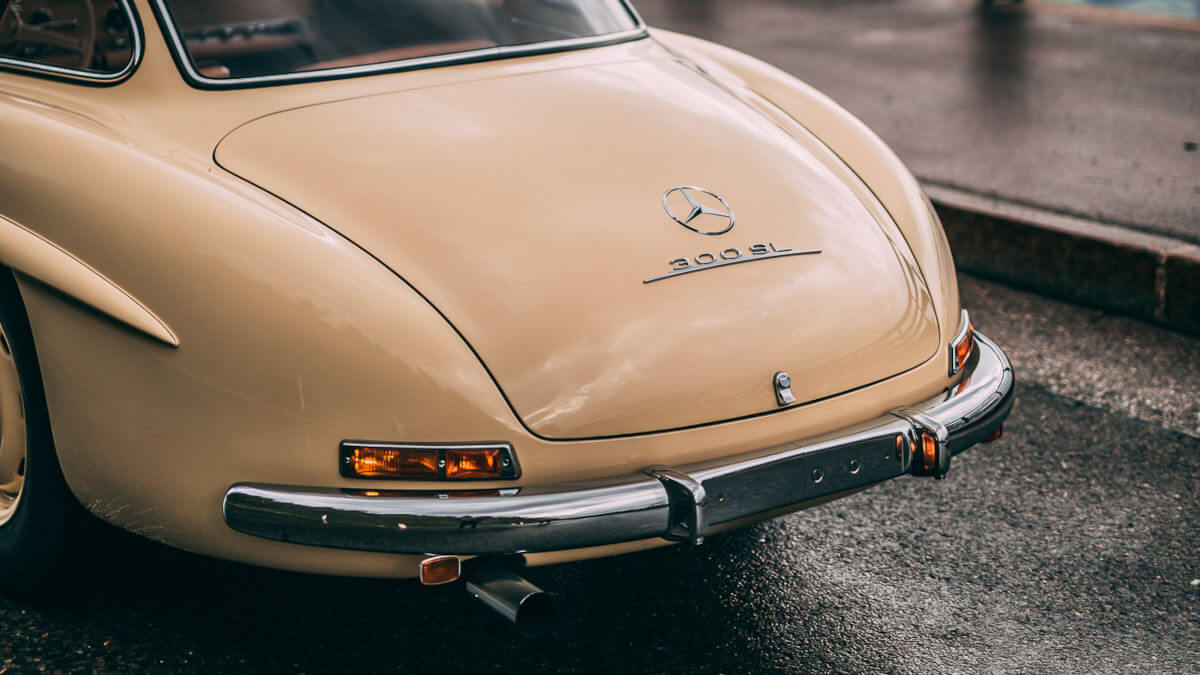



Here the story gets a bit strange for a moment, because both cars stood almost untouched in the Waikato area until the beginning of the 2000s, the Roadster under the open sky, the Coupé still in the shipping container. What exactly happened during this period is unknown. Garry Boyce, Vice President of the Mercedes-Benz Club Auckland, received a tip and drove to the address given. Once there, he had to argue with the property manager for quite a while before he was allowed to take a look at the cars. “Not for sale” was the unfriendly information of the administrator, although both SLs were in terrible condition. In the following years, he received only one answer to repeated inquiries: “No!” It was only after a lot of back and forth and after various attempts by other collectors and dealers from all over the world had been turned down, Michael Barrett finally agreed to sell those two cars.
Restored to concours condition
If the Coupé would’ve shown only light patina of the past decades, extensive restoration would have been unnecessary. Here, however, the ravages of time had massively gnawed away. Mr. Boyce therefore handed the aluminium 300 SL over to Lloyd Marx, who runs a specialist company for classic car restoration in New Zealand. The team there worked on every detail for a full four years. The precious lightweight body was worked on by hand until its unpainted surface shimmered silky. Engine, transmission and all other original parts were reconditioned to maintain the matching numbers condition. Following the work, the SL made its debut at the Ellerslie Intermarque Concours d’Elegance in NZ, where it won the Masters Class with the third highest score ever awarded. During the restoration, Boyce had found a new owner for the car, who brought it back to London in 2015. This was followed by a further 1,000 hours of work at HK Engineering to bring final details back to the delivery condition. This led to second place in the Post-War Tourer class at the 2016 Pebble Beach Concours d’Elegance. The vehicle now comes with a volume of expertise from Mercedes-Benz Classic, which states: “We couldn’t have restored the car any better in Germany”.
Images: Schaltkulisse




